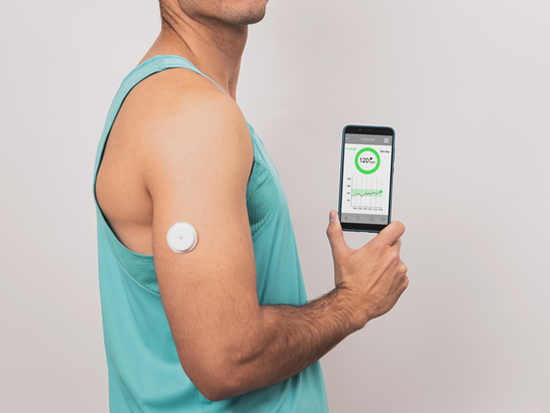 Continuous glucose monitors can transform one’s diabetes treatment and care. A UAB diabetes expert explains what patients should know about the devices when evaluating their diabetes care plans.More than 7 million Americans have diabetes severe enough to require daily insulin injections and frequent finger-pricks to check their blood glucose levels. Maintaining those glucose levels in the proper range is maddeningly personal.
Continuous glucose monitors can transform one’s diabetes treatment and care. A UAB diabetes expert explains what patients should know about the devices when evaluating their diabetes care plans.More than 7 million Americans have diabetes severe enough to require daily insulin injections and frequent finger-pricks to check their blood glucose levels. Maintaining those glucose levels in the proper range is maddeningly personal.
When Steve Wood, a photographer at the University of Alabama at Birmingham, was diagnosed with Type 1 diabetes last year, he visited the UAB Multidisciplinary Comprehensive Diabetes Clinic to create a care plan. He left with a small patch on his upper arm that sent instant updates on his blood sugar levels to his phone. It was a continuous glucose monitor.
“Continuous glucose monitoring has really transformed the way we manage patients,” said Fernando Ovalle, M.D., director of the UAB Division of Endocrinology, Diabetes and Metabolism and associate director of the Comprehensive Diabetes Center in the Marnix E. Heersink School of Medicine. “It makes everything more clear and less frustrating. It also tracks information that is important and helpful for the patient and their care providers.”
But what are continuous glucose monitors, and how do they improve diabetes care?
What are continuous glucose monitors?
The devices allow people with Type 1 or Type 2 diabetes to get a constant readout on their blood sugar levels every few minutes, day and night, instead of the moment-in-time snapshot of a fingerstick. Small wires pushed just under the skin, usually on the upper arm or abdomen, measure glucose levels. Results are then sent to the user’s smartphone or device, where a chart details whether glucose levels are rising or falling.
Schedule an appointment today with a UAB diabetes expert at uabmedicine.org.
What are the benefits?
Continuous glucose monitors send up-to-date data to patients, which provides detailed guidance daily. Many may not understand why glucose needs to stay at certain levels, but the monitors provide a visual goal.
“We are all genetically wired differently, and everyone’s glucose levels respond to food in different ways,” Ovalle said. “The monitors show users what happens when they eat certain foods, when they exercise or when they do not. They can then use this data to figure out what kind of diet and lifestyle behaviors keep their levels in an acceptable range.”
Research also shows providing someone a continuous glucose monitor, and doing nothing else, can lower their A1C, a blood test monitoring glucose levels, by 1 percent.
 Why should I get one?
Why should I get one?
Ovalle says, while some patients are hesitant to try the devices, he encourages patients to consider the option because of the usefulness he has seen among other patients.
“They don’t want to spend more money, have another copay, and they may be afraid that it is going to hurt,” Ovalle said. “However, continuous glucose monitoring makes everything more clear and less frustrating and is often an eye-opener.”
People who are on insulin will probably need to use a continuous glucose monitoring device on an ongoing basis, Ovalle explains, but others may benefit simply from using the device for a limited time. This allows patients to learn how their body reacts to food, exercise, stress and other factors.
Wood, whose son also has diabetes and uses a continuous glucose monitor, appreciates the technology both as a patient and as a parent.
“It is just so much easier — and it also helps you see how your blood sugar is trending more than a single finger-prick can tell you,” Wood said. “It also allows my wife and me to monitor our son’s levels throughout the day, like when he is playing hockey, which gives us peace of mind.”